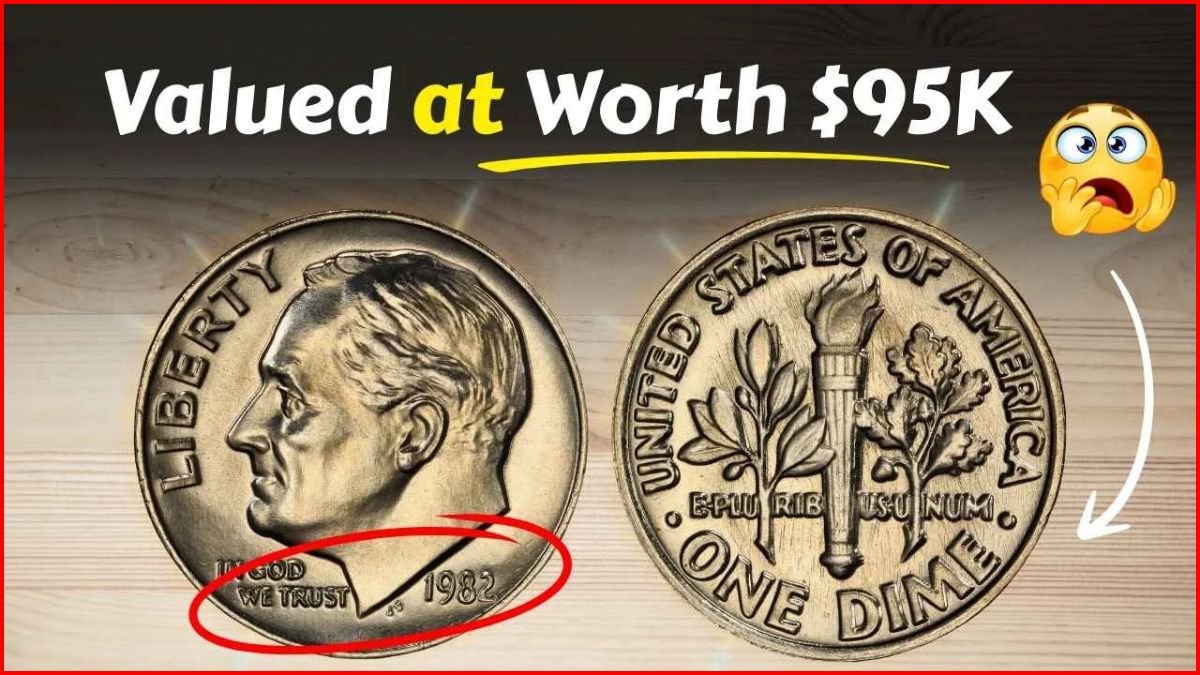Think about this for a second. How many times have you tossed a dime into a jar without even looking at it? Probably hundreds. But what if one of those tiny coins wasn’t worth just ten cents… what if it could be worth $95,000? That’s the reality with the 1942/1 Mercury Dime a small piece of silver that has turned into one of the most exciting finds in the coin-collecting world.
Why This Dime Stands Out
The Mercury Dime officially called the Winged Liberty Head dime was minted between 1916 and 1945. On the front, you’ll see Lady Liberty with wings on her cap, a symbol of freedom of thought. On the back, there’s a fasces, a bundle of sticks representing strength and unity.
Normally, these dimes are valued just a little above face value because they’re made of 90% silver. But the 1942/1 error dime is a completely different story. During production, some 1942 coins were accidentally struck over 1941 dies. If you look closely at the date, the “2” actually overlaps a faint “1.” That tiny mistake turned an everyday coin into a collector’s treasure.
How to Spot a 1942/1 Mercury Dime
So, could you have one hiding at home? Here’s what makes this coin special:
- The Date: The most obvious clue. Look for a clear “2” stamped over a faint “1” in “1942.”
- Mint Mark: If you find one with a small “D” on the back (for the Denver Mint), it’s even rarer.
- Condition: The better the shape, the higher the value. Coins graded “MS-65” or better (almost perfect) are the ones that hit five-figure and even six-figure prices.
- Silver Content: Like all Mercury Dimes, it’s made from 90% silver, so even the common ones carry a bit of value.
If you think you’ve got one, don’t rush off to sell it at a pawn shop. The smart move is to get it authenticated and graded by trusted services like PCGS or NGC.
Why Collectors Pay So Much
The big question is why would someone pay nearly $100,000 for a dime? It comes down to three things: rarity, demand, and condition. Millions of dimes were struck in 1942, but only a tiny handful carry this overdate error.
At auctions, the competition for these coins gets intense. One 1942/1 Mercury Dime sold for $84,000. Another reached $92,000. That’s not hype that’s history being valued.
Where You Might Find One
Sure, they’re rare, but they’re out there. People have discovered them in the most ordinary places:
- Old family coin collections passed down through generations.
- Antique stores or flea markets.
- Bank rolls of dimes.
- Forgotten jars of change tucked away in basements or attics.
The thrill of discovery is part of what keeps coin collectors searching. Imagine buying a jar of old coins at a garage sale for $5, only to find a dime worth tens of thousands inside.
Could You Be the Next Lucky Finder?
The odds aren’t huge, but they’re not zero either. Millions of Mercury Dimes were produced in the 1940s, and some of these rare error coins are still floating around, unnoticed. All it takes is one careful glance to turn an ordinary day into an unforgettable one.
So next time you spot a dusty old dime, don’t shrug it off. Grab a magnifying glass, check that date, and look closely. You might not just be holding spare change you could be holding history worth up to $95,000.
Conclusion
The 1942/1 Mercury Dime is proof that sometimes the smallest things carry the biggest surprises. While most are just ten-cent coins, a lucky few with the overdate error have become legendary treasures. People have sold them for tens of thousands and some close to $100,000.
It’s rare, yes. But not impossible. So before you toss your coins into a jar, take one last look. That little dime could be the find of a lifetime.
Disclaimer
This article is only for educational and general information purposes. The value of coins depends on rarity, condition, and demand. Always have coins authenticated and verified by professional grading services before making any financial decisions.
